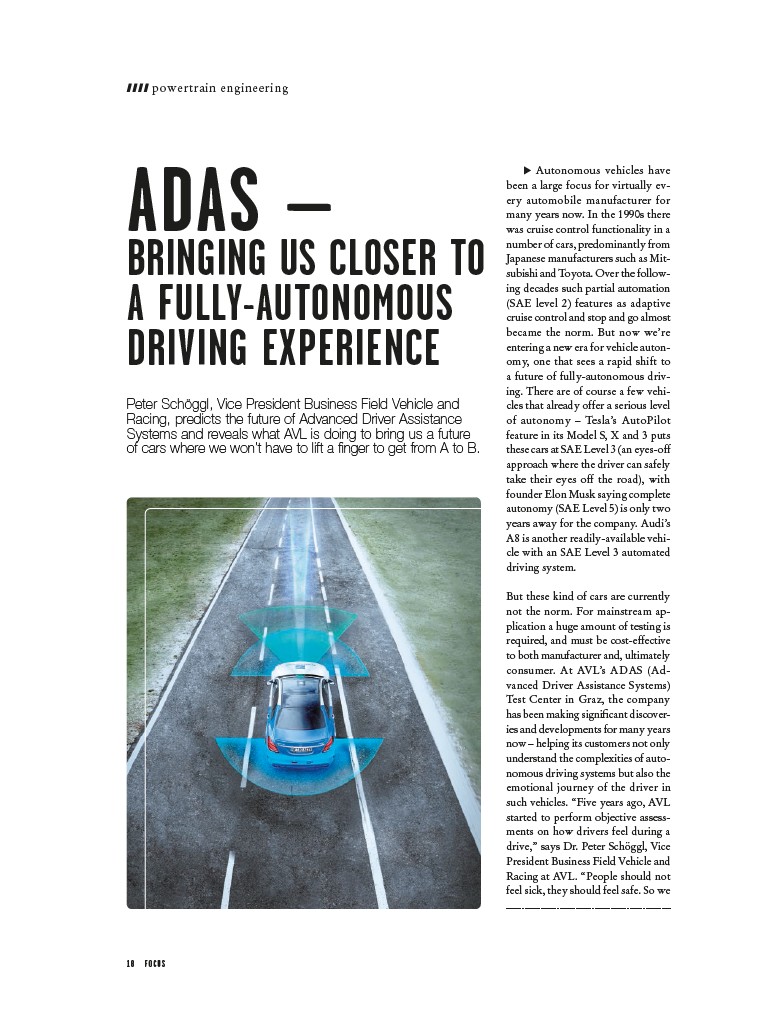
powertrain engineering
ADAS –
BRINGING US CLOSER TO
A FULLY-AUTONOMOUS
DRIVING EXPERIENCE
1 8 F O C U S
Autonomous vehicles have
been a large focus for virtually every
automobile manufacturer for
many years now. In the 1990s there
was cruise control functionality in a
number of cars, predominantly from
Japanese manufacturers such as Mitsubishi
and Toyota. Over the following
decades such partial automation
(SAE level 2) features as adaptive
cruise control and stop and go almost
became the norm. But now we’re
entering a new era for vehicle autonomy,
one that sees a rapid shift to
a future of fully-autonomous driving.
There are of course a few vehicles
that already offer a serious level
of autonomy – Tesla’s AutoPilot
feature in its Model S, X and 3 puts
these cars at SAE Level 3 (an eyes-off
approach where the driver can safely
take their eyes off the road), with
founder Elon Musk saying complete
autonomy (SAE Level 5) is only two
years away for the company. Audi’s
A8 is another readily-available vehicle
with an SAE Level 3 automated
driving system.
But these kind of cars are currently
not the norm. For mainstream application
a huge amount of testing is
required, and must be cost-effective
to both manufacturer and, ultimately
consumer. At AVL’s ADAS (Advanced
Driver Assistance Systems)
Test Center in Graz, the company
has been making significant discoveries
and developments for many years
now – helping its customers not only
understand the complexities of autonomous
driving systems but also the
emotional journey of the driver in
such vehicles. “Five years ago, AVL
started to perform objective assessments
on how drivers feel during a
drive,” says Dr. Peter Schöggl, Vice
President Business Field Vehicle and
Racing at AVL. “People should not
feel sick, they should feel safe. So we
Peter Schöggl, Vice President Business Field Vehicle and
Racing, predicts the future of Advanced Driver Assistance
Systems and reveals what AVL is doing to bring us a future
of cars where we won’t have to lift a finger to get from A to B.